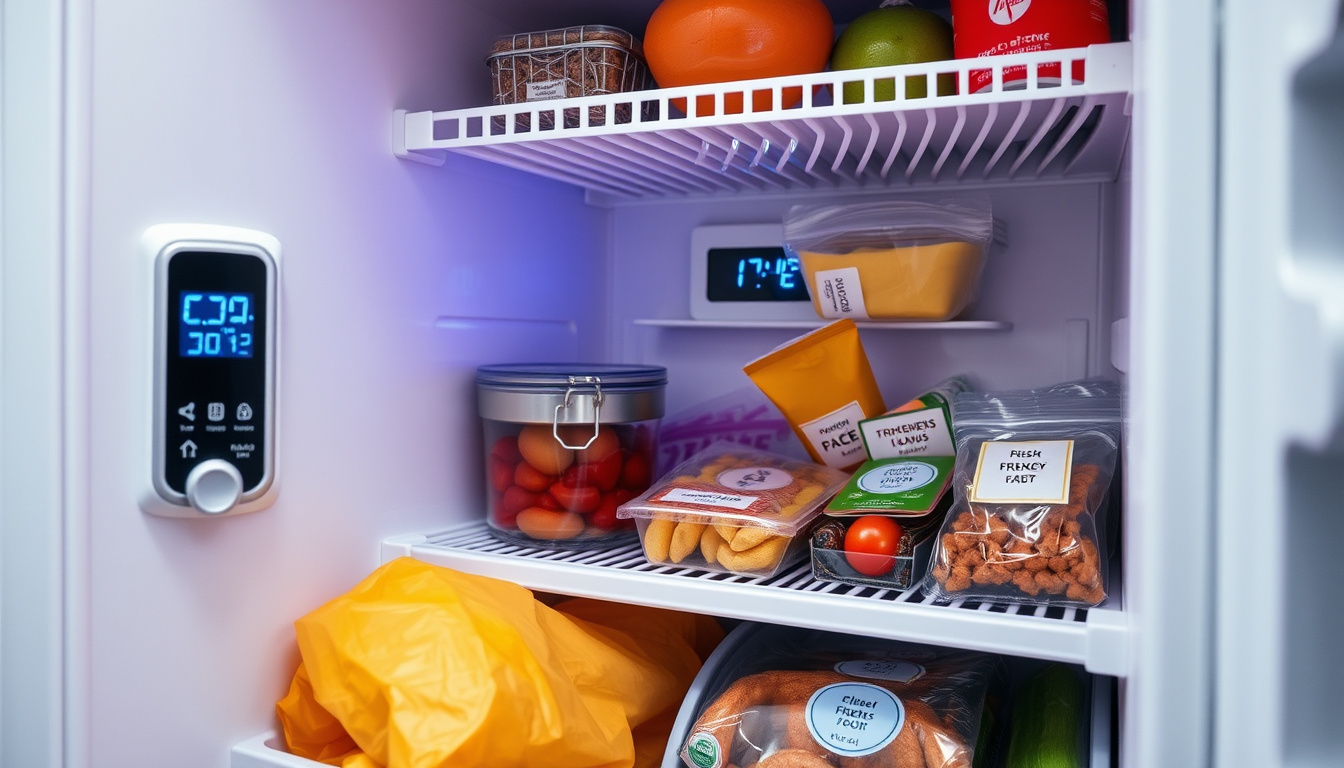Food safety and quality depend significantly on the correct storage temperatures of your refrigerator and freezer. When it comes to maintaining freshness and ensuring safety, understanding the appropriate temperature settings does more than prolong shelf life; it safeguards against foodborne illnesses. Here’s an essential guide to help you master the use of the right freezer temperature for optimal food freshness and flavor.
Understanding Refrigeration Basics
The U.S. Food and Drug Administration (FDA) recommends that your refrigerator be kept at or below 40°F (4°C) to minimize bacterial growth. However, for ideal performance, setting your fridge between 35°F and 38°F (1.7°C to 3.3°C) is optimal. This range ensures that food is kept cool enough to inhibit bacterial proliferation while preventing unnecessary freezing.
Conversely, your freezer should ideally maintain a temperature of 0°F (-18°C). This is critical for preserving the quality of frozen foods, preventing freezer burn, and prolonging storage life.
Temperature Control and Measurement
Many modern refrigerators come equipped with built-in digital thermometers, but older models might not maintain consistent temperatures. For those, it’s advisable to use a standalone appliance thermometer. Here’s how you can accurately measure and manage your fridge and freezer temperatures:
- Positioning Thermometers: Place one thermometer in the fridge, ideally near the back on the top shelf, and another in the freezer to verify they maintain the appropriate temperatures.
- Adjusting Settings: If your appliance isn’t reaching the optimal temperatures, adjust the settings accordingly. Regular checks can help ensure that the adjustments are effective.

Keeping Your Freezer Full
A common yet often overlooked tip is to keep your freezer adequately filled. A well-packed freezer retains cold better than an empty one. If you don’t have enough items to fill it, consider placing bags of ice or water bottles inside to help maintain consistent temperatures.
Best Practices for Food Placement
Correct placement of food in the refrigerator and freezer is crucial:
- Avoid Hot Food: Never place hot food directly into the refrigerator as it raises the internal temperature, allowing bacteria to thrive. Allow food to cool slightly before storing, but not to room temperature.
- Organize for Air Flow: Ensure that food items do not block air circulation within the refrigerator and freezer. This helps maintain an even temperature and improves cooling efficiency.
Power Outages and Food Safety
In the event of a power outage, keeping your refrigerator and freezer doors shut as much as possible is critical. A closed refrigerator can keep food safe for about 4 hours, while a full freezer can last up to 48 hours. When in doubt, if food has been above 40°F for over two hours, it’s best to discard it to avoid foodborne illness.
Special Considerations for Produce
Different fruits and vegetables may require specific humidity and temperature settings for optimal freshness. For instance:
- High-Humidity Drawers: Ideal for vegetables, these drawers keep moisture in, preventing wilting.
- Low-Humidity Drawers: Best for fruits that produce ethylene gas, which can cause spoilage in other produce.
Conclusion
Using the right freezer temperature is essential not just for food safety but also for maintaining the flavor and texture of your food. Striving to keep your refrigerator at 35°F to 38°F and your freezer at 0°F will help ensure that your food stays fresh, safe, and flavorful. By understanding these simple guidelines, you can significantly reduce food waste and enhance your culinary experience—your meals will not only last longer, but they will taste better too!
>> Chest Freezer Reviews <<
>> Upright Freezer Reviews <<

